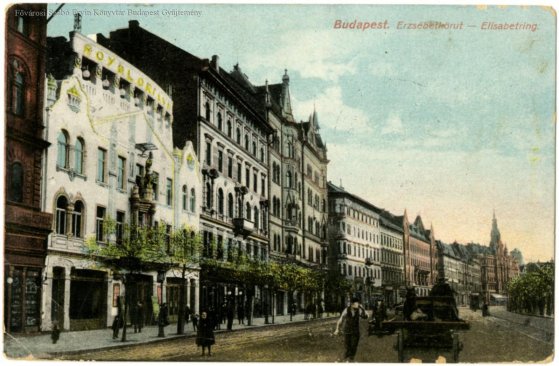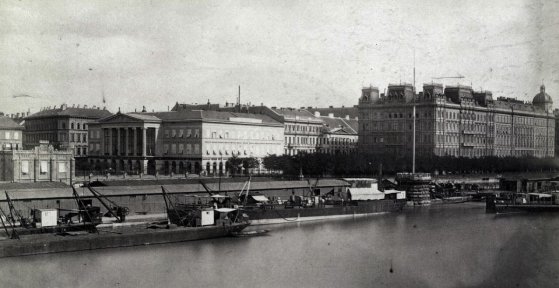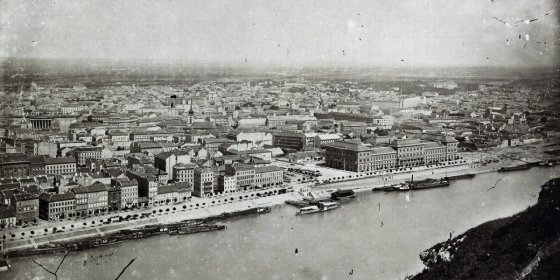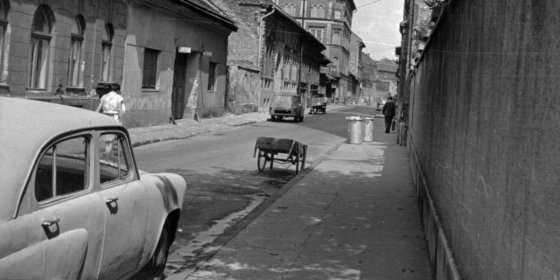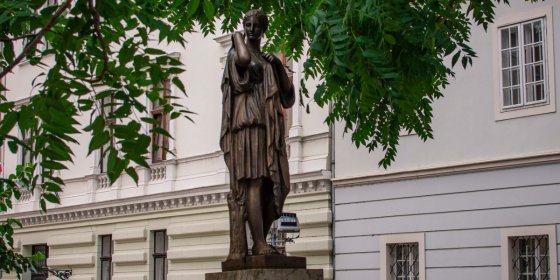 The „intertwined history” of the bridges and the city of Budapest
Which ideas and events have shaped the fate of bridges of Budapest and the cityscape? Alongside many other interesting facts, this question is also answered this newly published book by the Budapest City Archives, which introduces the history of bridges in Budapest.
The „intertwined history” of the bridges and the city of Budapest
Which ideas and events have shaped the fate of bridges of Budapest and the cityscape? Alongside many other interesting facts, this question is also answered this newly published book by the Budapest City Archives, which introduces the history of bridges in Budapest.
urban planning
 The pioneer of modern architecture - Virgil Borbíró was born 130 years ago
The pioneer of modern architecture - Virgil Borbíró was born 130 years ago
March 6, 2023 at 10:00 AM
In the first half of the 20th century, Hungarian architectural public life was punctuated by many debates: at first, the Hungarian design language was at the centre, then from the second half of the 1920s, modern architecture. Virgil Borbíró took on a fighting role in the latter and fought determinedly for the new trend to gain ground. The engineer, who was born exactly one hundred and thirty years ago, left his mark on Hungarian cultural history not only with his buildings but also with his writings and organisational work.
The last expropriations: Dilapidated houses stood on the route of Erzsébet Boulevard
March 4, 2023 at 2:00 PM
The Outer Ring Road in Budapest was built over a long period of time in several waves. One of the important turning points in the history of the construction of the road occurred in 1888 when the section from Margit Bridge to Üllői Road became completely open.
Plans for a metropolis - the beginnings of Budapest's urban planning
July 25, 2022 at 10:00 AM
Budapest's golden age coincided with the country's economic boom: after the Compromise of 1867, the city, located on both banks of the Danube, began to develop rapidly. In 1870, in order to regulate growth, the Parliament established the Budapest Public Works Council, whose first tasks included the procurement of a general city plan. Based on this, in 1872 - one hundred and fifty years ago - Pest's first comprehensive regulatory plan was drawn up.
"Budapest should be made a metropolis" - 150 years ago, the large-scale constructions in the capital were announced
November 4, 2021 at 10:30 AM
The transformation of the Hungarian capital into a metropolis was formulated before the unification of Pest and Buda, when in 1871 a tender was issued for the preparation of a regulatory plan that would provide a framework for the planned large-scale constructions. The tender, which closed 150 years ago, received a number of proposals that contributed to the development of the currently known structure and cityscape of the capital.
Fifty years ago large-scale plans to redesign Józsefváros were born
December 30, 2020 at 9:00 AM
Various plans to redesign the inner sections of Józsefváros and replace the out-dated kitchen and room flats built at the end of the 19th century were floated decades ago. Fifty years ago the Budapest Council adopted a large-scale plan to demolish 3,400 flats. By the time the district already had mixed experiences of how the city centre could be rehabilitated.
A wandering Greek goddess that found a home next to Magdolna Tower – The Hebe Fountain has stood at several points of Buda Castle
August 17, 2020 at 9:00 AM
The Hebe Fountain in Buda Castle, also known as the Artemis Fountain, now stands in an intimate little unnamed square at the foot of the Magdolna Tower, at the northern end of Úri Street. It seems that this 19th century well statue, previously erected in two other places in the Castle, has found its final home. For various reasons, the Greek goddess has been moved from two other locations before. The nomadic statue also has two names: after its inauguration, it was identified from Greek mythology as the figure of Hebe, when in fact, it was a copy of a statue of Artemis in Paris.
More articles
 The „intertwined history” of the bridges and the city of Budapest
Which ideas and events have shaped the fate of bridges of Budapest and the cityscape? Alongside many other interesting facts, this question is also answered this newly published book by the Budapest City Archives, which introduces the history of bridges in Budapest.
The „intertwined history” of the bridges and the city of Budapest
Which ideas and events have shaped the fate of bridges of Budapest and the cityscape? Alongside many other interesting facts, this question is also answered this newly published book by the Budapest City Archives, which introduces the history of bridges in Budapest.
 The Bridge Report, which brought a turning point in the history of Budapest
A travel report that changed the history of Pest and Buda, as well as Hungary. The little book contributed to the change of half a thousand years of legal customs and the implementation of an investment of unprecedented size and technical quality. This book was The Bridge Report [Hídjelentés in Hungarian].
The Bridge Report, which brought a turning point in the history of Budapest
A travel report that changed the history of Pest and Buda, as well as Hungary. The little book contributed to the change of half a thousand years of legal customs and the implementation of an investment of unprecedented size and technical quality. This book was The Bridge Report [Hídjelentés in Hungarian].
 Drama on the university wall - The heroic monument was planned 95 years ago
In the constant hustle and bustle of the Egyetem Square in Pest, the students may not even notice the monument that decorates the short section of wall between the church and the central building of ELTE. However, it commemorates their predecessors, the heroes who fought for their country in World War I, and those who heroically helped them. The first design of the dramatically collapsing soldier was born in 1928, ninety-five years ago.
Drama on the university wall - The heroic monument was planned 95 years ago
In the constant hustle and bustle of the Egyetem Square in Pest, the students may not even notice the monument that decorates the short section of wall between the church and the central building of ELTE. However, it commemorates their predecessors, the heroes who fought for their country in World War I, and those who heroically helped them. The first design of the dramatically collapsing soldier was born in 1928, ninety-five years ago.

